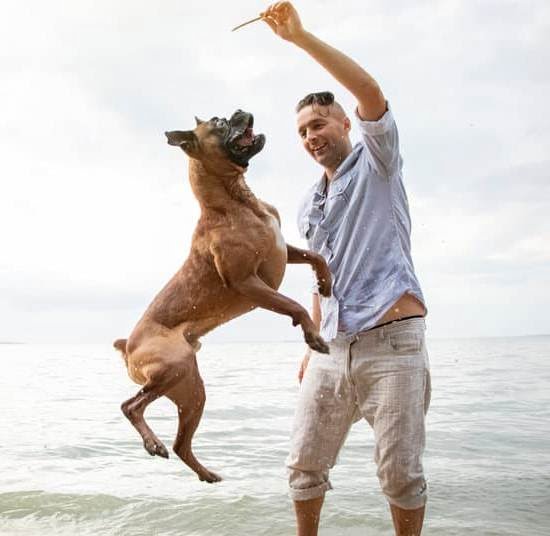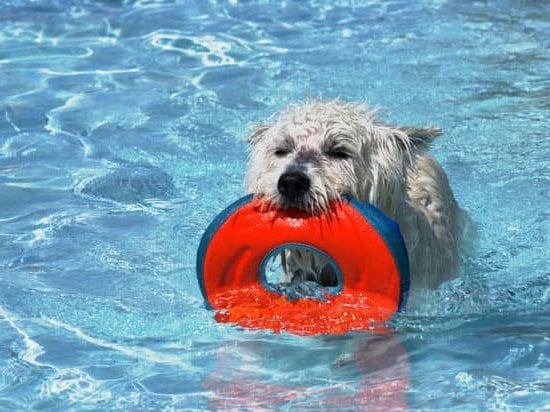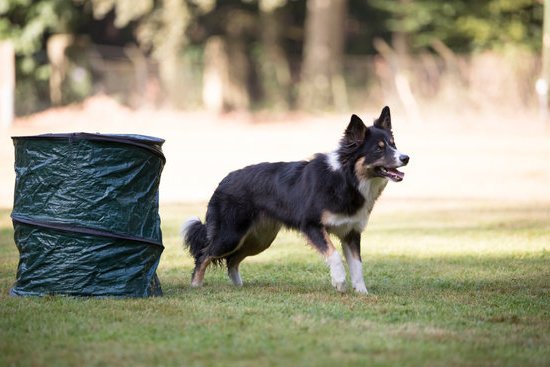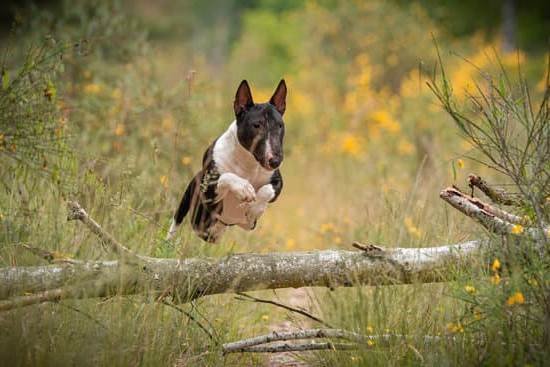Leash training is an essential skill for both dogs and their owners. It not only enhances the safety of the dog but also fosters better behavior during walks and outings. In this article, we will explore how to get a dog leash trained, covering various aspects such as understanding your dog’s behavior, choosing the right leash and collar, introducing the leash, basic obedience training, positive reinforcement techniques, troubleshooting common issues, and the importance of consistency and patience.
Leash training is crucial for ensuring that your dog behaves appropriately while being walked. It also provides a level of control that is necessary for the safety of your pet. Understanding your dog’s behavior, including why they may resist leash training, is vital in devising effective strategies. By choosing the right leash and collar based on your dog’s breed and size, you can make the training process more comfortable for both you and your furry friend.
Introducing the leash to your dog in a positive manner and gradually familiarizing them with its presence are crucial steps in successful leash training. Basic obedience commands such as sit, stay, and heel play a significant role in enhancing leash manners. Positive reinforcement techniques through treats and praise can encourage desired behavior during leash training sessions. Lastly, addressing common issues that arise during leash training and staying consistent with patience are key to achieving successful results with your dog.
Understanding Your Dog’s Behavior
Resistance to Leash Training
Some dogs may resist leash training due to a variety of reasons. Fear, anxiety, and past negative experiences can contribute to a dog’s reluctance to be leashed.
It’s important for dog owners to be patient and understanding when dealing with a pup that is resistant to leash training. By identifying the root cause of the resistance, whether it’s fear of the leash itself or fear of being restrained, owners can tailor their approach to help their dog overcome these barriers.
Personality and Temperament
It’s essential for dog owners to recognize that different breeds and individual dogs have unique personalities and temperaments that can affect their response to leash training. For example, high-energy breeds may initially have more difficulty adjusting to the restraints of a leash, while other dogs may exhibit stubbornness or independence. Understanding your dog’s personality and temperament can help you modify your training methods accordingly and set realistic expectations for the process.
Building Trust and Confidence
Leash training involves building trust and confidence between the owner and the dog. By establishing a strong bond with your pet through positive reinforcement and consistent training, it becomes easier for your dog to understand that the leash is not a threat but rather a tool for enjoyable moments outdoors. This process allows both owner and pet to form a stronger connection while working together towards successful leash training.
Choosing the Right Leash and Collar
When it comes to leash training your dog, choosing the right leash and collar is crucial for both their comfort and safety. There are various options available, so it’s important to consider your dog’s size, breed, and behavior when making this decision.
Here are some factors to keep in mind when selecting a leash and collar:
- Size and Breed: The size and breed of your dog will influence which type of leash and collar is most suitable. For example, smaller dogs may be more comfortable with a lightweight harness, while larger breeds may benefit from a sturdy, adjustable collar.
- Behavior: If your dog tends to pull or lunge while on walks, a no-pull harness or head halter could provide better control without causing discomfort.
- Material: Leashes and collars come in various materials such as nylon, leather, or chain. Consider the durability and ease of cleaning when choosing the material that best suits your dog’s lifestyle.
It’s essential to take the time to properly fit the collar or harness to ensure that it is not too tight or too loose on your dog. A well-fitted collar or harness will prevent any potential harm or discomfort during walks. By carefully considering these factors, you can choose the right leash and collar that will make a significant difference in your dog’s leash training experience.
Introducing the Leash
Tips for a Positive Introduction
When introducing the leash to your dog, it’s essential to create a positive association with this new object. Start by allowing your dog to sniff and investigate the leash before attempting to put it on. This will help alleviate any fear or apprehension your dog may have towards the unfamiliar item. Additionally, consider using treats or toys to make the introduction more enjoyable for your pup.
Gradual Familiarization
After your dog has become comfortable with the presence of the leash, begin attaching it to their collar for short periods while they are inside the house. Allow your dog to move freely with the leash attached and monitor their behavior. This step will help them acclimate to the sensation of wearing a leash without associating it solely with outside walks.
Positive Reinforcement
During this stage, it’s crucial to use plenty of praise and positive reinforcement when your dog behaves calmly while wearing the leash. Offer treats, verbal praise, and affection as rewards for good behavior. By doing so, you are reinforcing the idea that being leashed is a positive experience for your furry friend. Through consistent positive reinforcement, your dog will learn to associate wearing a leash with positive outcomes and rewards, making future training sessions more effective.
Basic Obedience Training
When it comes to leash training, basic obedience training is a crucial aspect of ensuring success. Teaching your dog fundamental commands such as sit, stay, and heel not only establishes a good foundation for leash training but also promotes overall obedience and good behavior. These commands are essential for maintaining control of your dog while on the leash and can prevent a range of issues such as pulling or running off.
The “sit” command is particularly important as it allows you to gain control over your dog’s movements when they become overexcited or agitated during walks. By teaching your dog to sit on command, you can effectively address any behavioral problems that may arise while on the leash. Similarly, the “stay” and “heel” commands help to reinforce discipline and ensure that your dog remains focused on you as the owner during walks.
Consistency is key when it comes to basic obedience training. It’s important to practice these commands regularly with your dog in various environments to solidify their understanding and response. Using positive reinforcement techniques, such as offering treats and praise when the desired behavior is exhibited, can also accelerate the learning process for your dog.
| Command | Purpose |
|---|---|
| Sit | Gain control during walks |
| Stay | Promote discipline and focus |
| Heel | Maintain proximity and attention |
Positive Reinforcement Techniques
When it comes to leash training your dog, positive reinforcement techniques can be incredibly effective in encouraging good behavior. Using treats and praise as a form of reward can help create a positive association with walking on a leash, making the experience enjoyable for your furry friend. Here are some strategies for utilizing positive reinforcement during leash training sessions:
- Offer small, tasty treats as rewards for walking nicely on the leash
- Praise and pet your dog when they exhibit good leash manners
- Use a clicker to mark the desired behavior and follow it up with a treat
- Be consistent with rewarding your dog every time they display the desired behavior
It’s important to remember that every dog is different, and what works as a reward for one may not be as motivating for another. Experiment with different types of treats and find out what truly excites and motivates your canine companion.
In addition to treats, verbal praise and affection should also be included in the positive reinforcement process. Dogs thrive on approval from their owners, so be sure to shower them with love and praise when they behave well on the leash.
Consistency is key in reinforcing good behavior, so be sure to reward your dog every time they demonstrate the desired actions while on the leash. With patience and persistence, positive reinforcement can go a long way in helping your dog become leashed trained.
Troubleshooting Common Leash Training Issues
As much as we hope for a smooth transition when it comes to leash training our dogs, it’s common to encounter some challenges along the way. Understanding and effectively addressing these issues is crucial in ensuring that your dog becomes well-trained and comfortable with walking on a leash.
One of the most common problems during leash training is pulling. This behavior can be frustrating for owners and potentially dangerous if not corrected. One effective solution is to stop walking whenever your dog starts pulling on the leash. This teaches them that pulling will not get them where they want to go, and they will eventually learn to walk without pulling.
Another issue some dog owners face is leash aggression, where their dogs become reactive or hostile towards other dogs or people while on a leash. To address this, consider seeking the guidance of a professional dog trainer who can help assess the situation and provide personalized strategies for managing this behavior.
Furthermore, lunging while on a leash can also be problematic, especially if your dog has a strong build. Using positive reinforcement techniques and redirecting their attention to you through treats or toys can help discourage this behavior over time.
Troubleshooting these common leash training issues requires patience, consistency, and a deep understanding of your dog’s behavior. It’s essential to remain calm and composed while addressing these challenges, as frustration or anger may cause further setbacks in the training process.
| Common Leash Training Issues | Solutions |
|---|---|
| Pulling | Stop walking whenever your dog starts pulling on the leash. |
| Leash Aggression | Seek guidance from a professional dog trainer for personalized strategies. |
| Lunging | Use positive reinforcement techniques and redirect their attention. |
Consistency and Patience
In conclusion, leash training is a crucial aspect of responsible dog ownership, and it offers numerous benefits for both the dog and the owner. By investing time and effort into leash training, dog owners can ensure their pet’s safety, improve their behavior, and enhance the overall quality of life for both parties. Understanding your dog’s individual temperament and choosing the right leash and collar are essential first steps in the process.
Introducing the leash to your dog in a positive and non-threatening manner, along with basic obedience training, sets the foundation for successful leash training. Positive reinforcement techniques like using treats and praise can further encourage desired behavior while troubleshooting common issues such as pulling or leash aggression requires patience and dedication.
Ultimately, consistency and patience are key to achieving success in leash training. It’s important for owners to remain dedicated to the process, stay persistent, and maintain a positive attitude throughout.
With time and commitment, leash training can lead to a stronger bond between you and your dog, as well as a more enjoyable experience during walks or outings. So remember to be patient, consistent, and always provide positive reinforcement to help your furry friend become a well-behaved companion on the leash.
Frequently Asked Questions
How Long Does It Take to Leash Train a Dog?
The time it takes to leash train a dog can vary depending on the dog’s breed, age, and previous experiences with leashes. Some dogs may pick up leash training quickly within a few weeks, while others may take several months to fully grasp walking on a leash without pulling.
How Do I Train My Dog to Walk on a Leash Without Pulling?
Training a dog to walk on a leash without pulling requires patience, consistency, and positive reinforcement. It’s important to start with short walks in low-distraction environments and use treats or praise to reward the dog for walking calmly by your side.
Gradually increase the length of walks and introduce more challenging environments as the dog becomes more comfortable with walking on a leash without pulling.
What Is the Fastest Way to Leash Train a Dog?
The fastest way to leash train a dog is through positive reinforcement training methods. This involves rewarding the dog with treats, praise, or toys when they exhibit the desired behavior of walking on a leash without pulling.
Consistent training sessions and patience are key to quickly teaching a dog how to walk calmly on a leash. Rushing the process or using punishment-based methods can lead to confusion and anxiety in the dog, making the training process longer and less effective.

Welcome to the blog! I am a professional dog trainer and have been working with dogs for many years. In this blog, I will be discussing various topics related to dog training, including tips, tricks, and advice. I hope you find this information helpful and informative. Thanks for reading!





